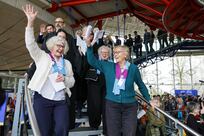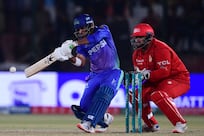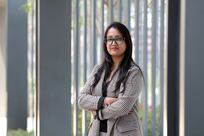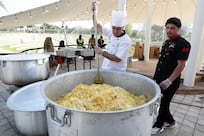Despite a difficult first quarter, advertising spending in the Middle East is on track to grow 20 per cent this year, thanks to the satellite television market, according to the head of the Pan Arab Research Center (PARC). Speaking on the sidelines of the Arab Media Forum in Dubai yesterday, Sami Raffoul, the founder and general manager of PARC, said that despite the region's relatively modest 11 per cent growth in the first quarter of this year, he believed the decline was likely to bottom out in the third quarter. "In 2008, oil was at $147 a barrel, so we had a 44 per cent increase [in advertising spending] in the UAE and we had a regional increase of 25 per cent," he said. "This year, with lower oil, it would be good to be in the zone of a 20 per cent increase overall across the whole region. Right now we are in that range, but because one market is compensating for another." Specifically, pan-Arab satellite television is propping up the region's advertising industry, which has been hit hard in local markets such as the UAE, he said. While the UAE's advertising spending dropped 14 per cent last quarter compared with last year, pan-Arab media, which is mostly satellite television, grew 28 per cent. "The satellite factor continues its growth because the beverage manufacturers, the chocolate manufacturers and the automotive companies can sell one ad to all the markets together," he said. "With that, they see that the value of their dollar can be more powerful on the satellite broadcast than on a localised market activity. That will help and it will shore up the total sum." The relative bargain that advertisers can get by advertising on satellite television is also responsible for what some critics see as the stagnation of the budgets, and therefore the production values, of Arab television stations. Mazen Hayek, the group director of marketing, PR and commercial for the broadcaster MBC, said the Arab world's annual advertising spend per capita of between US$30 (Dh110) and $50 paled in comparison to the $500 annual per capita spend in the US. "We will never raise the level of content for our own reader and viewers unless we have that level of investment," he said. But this is an old complaint and yesterday it was largely eclipsed by a sense of relief that neither the region's media nor its larger economy seemed likely to face the level of turmoil that has beset their western counterparts. "During a slowdown, there is a tendency to move toward a consolidation of advertising budgets that cannot be disregarded," said Mr Hayek. "However, we have to stress that our economies have not been impacted [badly] compared to other economies. This is very positive and we are proud that many measures taken in the region have led to the relatively good resolution, in relation to other countries. This reflects positively in the first quarter of 2009 in the advertising sector." Even the UAE, where media sector woes most resemble the West's, has reason for optimism in the second half of this year, Mr Raffoul said. Upcoming infrastructure investments such as the Dubai Metro would require major advertising campaigns, he added. "Right now, 2009 is a mixed situation", for the UAE, he said. "It would be good if we were able to register 10 per cent growth. We will know only in quarter three. The end of quarter two will tell us how the situation is likely to change." khagey@thenational.ae
Adspend to grow despite slowing economy
Pan-Arab satellite television is propping up the region's industry, which has been hit hard in individual local markets such as the UAE.
Editor's Picks
More from the national




